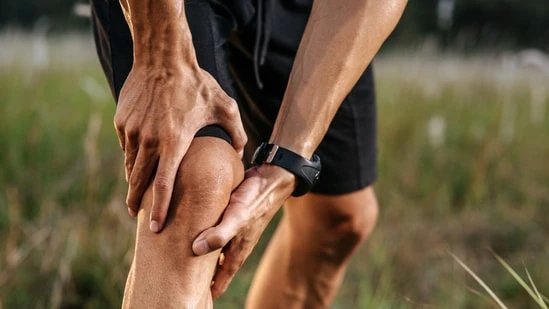Diabetes can impact bone health, and it’s essential to be aware of the risks and work with your doctor to manage them. In an interview with HT Lifestyle, Dr Adarsh K S, consultant, diabetes and endocrinology, Manipal Hospital, Old Airport Road (Bengaluru) explained that diabetes can increase your risk of fractures.
He shared that there are two main types of diabetes: type 1 and type 2. While type 1 can lead to lower bone density, especially if it develops at a young age, type 2 diabetes – often associated with normal or high bone density, but poor bone quality – can still increase fracture risk.
Why is diabetes a concern for bones?
Dr Adarsh said, “Diabetes mellitus is characterised by chronic hyperglycaemia due to insulin deficiency, resistance or both. Diabetes mellitus, either T1DM or T2DM, are associated with increased risk of fractures.” According to Dr Adarsh, the mechanisms by which diabetes affects bone health significantly vary between type 1 diabetes mellitus (T1DM) and type 2 diabetes mellitus (T2DM).
He said, “T1DM impairs bone health by decreasing bone mineral density (BMD). T1DM develops at a critical stage of fast skeletal growth, resulting in lower bone density. T2DM impacts bone health owing to metabolic abnormalities and obesity. They usually have inferior bone quality. Unlike T1DM, T2DM is frequently accompanied by normal or even higher BMD levels.”
Dr Adarsh shared that the increased risk of fracture in T2DM despite normal or high BMD suggests that that factors such as bone quality and micro-architectural integrity are compromised. “Conventional fracture risk assessment approaches, such as BMD-DXA and FRAX, tend to underestimate fracture risk in diabetic patients. DXA is beneficial for assessing bone density, however it may not reveal changes in bone quality caused by diabetes. While DXA is useful for measuring bone density, it may not detect changes in bone quality associated with diabetes,” Dr Adarsh said.
 What can be done?
What can be done?
As per the doctor, while high-resolution computed tomography (HRCT) can tell us about bone microarchitecture abnormalities, it is not widely available. Dr Adarsh said, “Trabecular Bone Score (TBS) may be a useful tool for assessing microarchitecture, particularly in patients with T2DM and preserved BMD. TBS is reduced in T2DM. Tetracycline-labelled iliac bone biopsy histomorphometry can be used to assess bone turnover, but has limited clinical utility due to its invasiveness.”
He added, “Serum bone turnover markers (BTMs) can serve as surrogate indicators. Procollagen type 1 N-terminal propertied (P1NP) and C-telopeptide (CTX) are blood indicators of bone production and resorption, respectively. Bone turnover is decreased in T2DM patients. Identifying and treating diabetic bone disease requires high degree of suspicion and multimodality treatment including pharmacological interventions and dietary and lifestyle modifications.”
